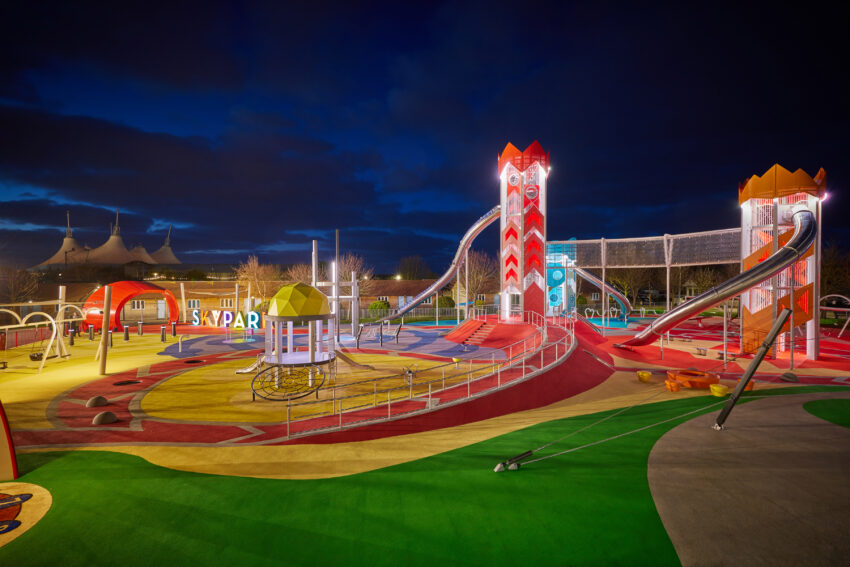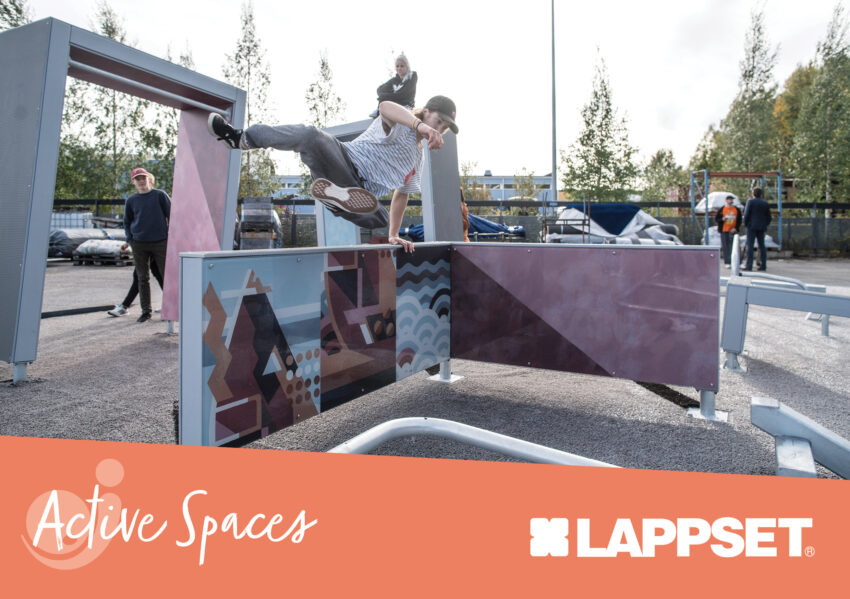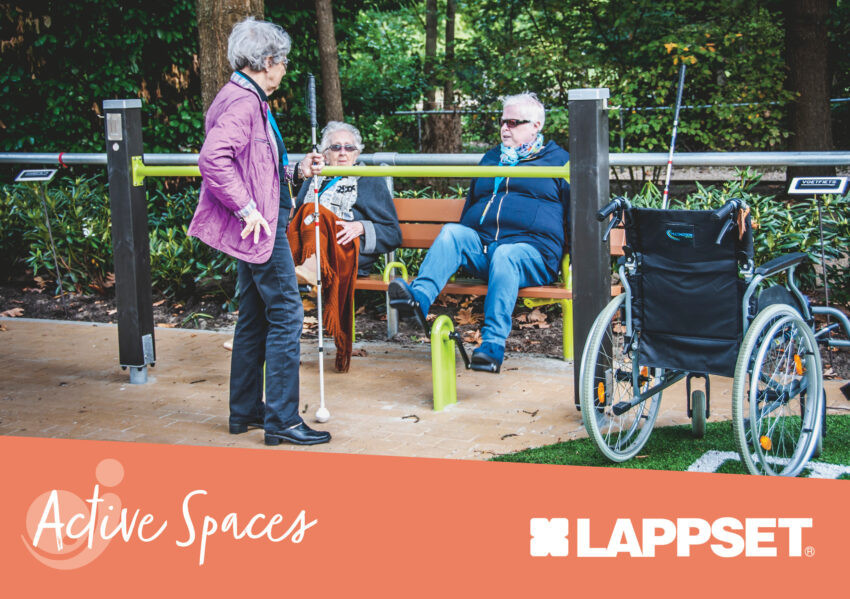CANTLEY PARK INTERACTIVE PLAY SPACE
CANTLEY PARK INTERACTIVE PLAY SPACE CANTLEY PARK INTERACTIVE PLAY SPACE THE BRIEF: The council was committed to creating a new destination play area on site
Only one in three children are physically active every day. Enjoyment is the single biggest factor in motivating children to be active, new analysis from our Active Lives Children and Young People Survey has revealed. By providing early positive experiences that are fun, you can maximize the desire to be physically active. But how do you make it fun?
Children are born to play. They are born to be active, experiment, run, collect, build, jump, hide & seek, slide, swing, dance and explore. Playgrounds are ideal to spark excitement and children’s imaginations. But the world has changed. We live in a world where children on average spend 9 hours a day using media. Slides and swings compete with the newest versions of online games. What would happen when you combine the positives of the digital world with traditional play by making use of modern technology? You make it more fun!

1: By making use of modern technology, outdoor play can be made even more fun. Most people are not aware of the existence of dance arches, interactive ball walls with led-sensitive panels, outdoor classroom possibilities or DJ tables for teens.
2: Interactive playsets greatly exceed their traditional counterparts in terms of exercise intensity. Games on the interactive sports field Yalp Toro result in higher exercise intensity than playing a competitive football game. By giving specific commands on how to move interactives allow children to move beyond their comfort zones and ‘learn how to move’.
3: Dance is one of the most comprehensive representations of physical literacy. Our play arch Sona greatly stimulates key elements of agility, balance and coordination that form the basis for movement competency and greater sport participation.
4: “Anyone who makes a distinction between games and learning doesn’t know the first thing about either” – Marshall McLuhan. All our interactive concepts are internet-connected in order to research engagement and frequently upload new games.
5: Interactive play makes the SROI visible. For every interactive, we show you the time played and the kcal’s burned (great tool in fundraising). Play England proved that investing in play pays off and concluded that every British Pound invested resulted in a 150% ROI.
6: A teen hangout can be turned into an inspiring meeting area where kids can use their creativity, socialise, enhance their self-esteem, independence and identities. There are concerns as to how social media is affecting the way in which the brain learns to socialise and how adolescents spend their time. The DJ booth Yalp Fono harnesses technology to optimise the positive effects of teen hangouts.
7: Interactive play is so much fun that children get a diminished consciousness of self, lose track of time and get their daily exercise in without needing any further incentive.
8: Interactive play is truly inclusive and intergenerational and allows for great family fun. Our interactives have freely accessible play surfaces and allow everyone to play together. If your child sees you enjoying being active, they will see playing outside and sport as a valuable part of life.
9: Interactive play offers a way to link physical education to other classes such as history or biology. School Headmaster Marco Schaap tells us: “Of course the math games on the Yalp Memo would never replace math lessons, but it’s a fun way the kids can choose to practice math. Our teachers often take the younger classes outside to the Memo. The lessons are becoming more dynamic, and the material sticks better”.
10: There is a big difference in the offer of interactive play.
The positive effects of interactive play are only maximised when equipment doesn’t only contain lights and sounds but truly allow for game updates and 2-way information flow.
CANTLEY PARK INTERACTIVE PLAY SPACE CANTLEY PARK INTERACTIVE PLAY SPACE THE BRIEF: The council was committed to creating a new destination play area on site
Promoting Inclusivity in Public Parks and Outdoor Spaces A Call to our Clients In the realm of outdoor play and recreation, a profound shift in

Introducing the UK’s most exciting playground… Jupiter Play & Leisure are delighted to have partnered with renowned holiday destination Butlin’s to design and

It is essential, now more than ever, to stay current on what trends are driving the future of play. Play is integral not only to

DESIGNING DASH PARKOUR: A HOLISTIC R&D-PROJECT Design is an empathic way of thinking and working, and in our field, designer is the cross-field intermediary who

Landscape designer Arja Paula speaks about aspects to consider when designing a Senior park. I prefer the term senior park because it is more of

Accreditations:






Subscribe to our newsletter to keep up to date with whats happening:
Edinburgh
9 Ainslie Place
Edinburgh
EH3 6AT
Nottingham
The Coach House
2 North Road
West Bridgford
NG2 7NH